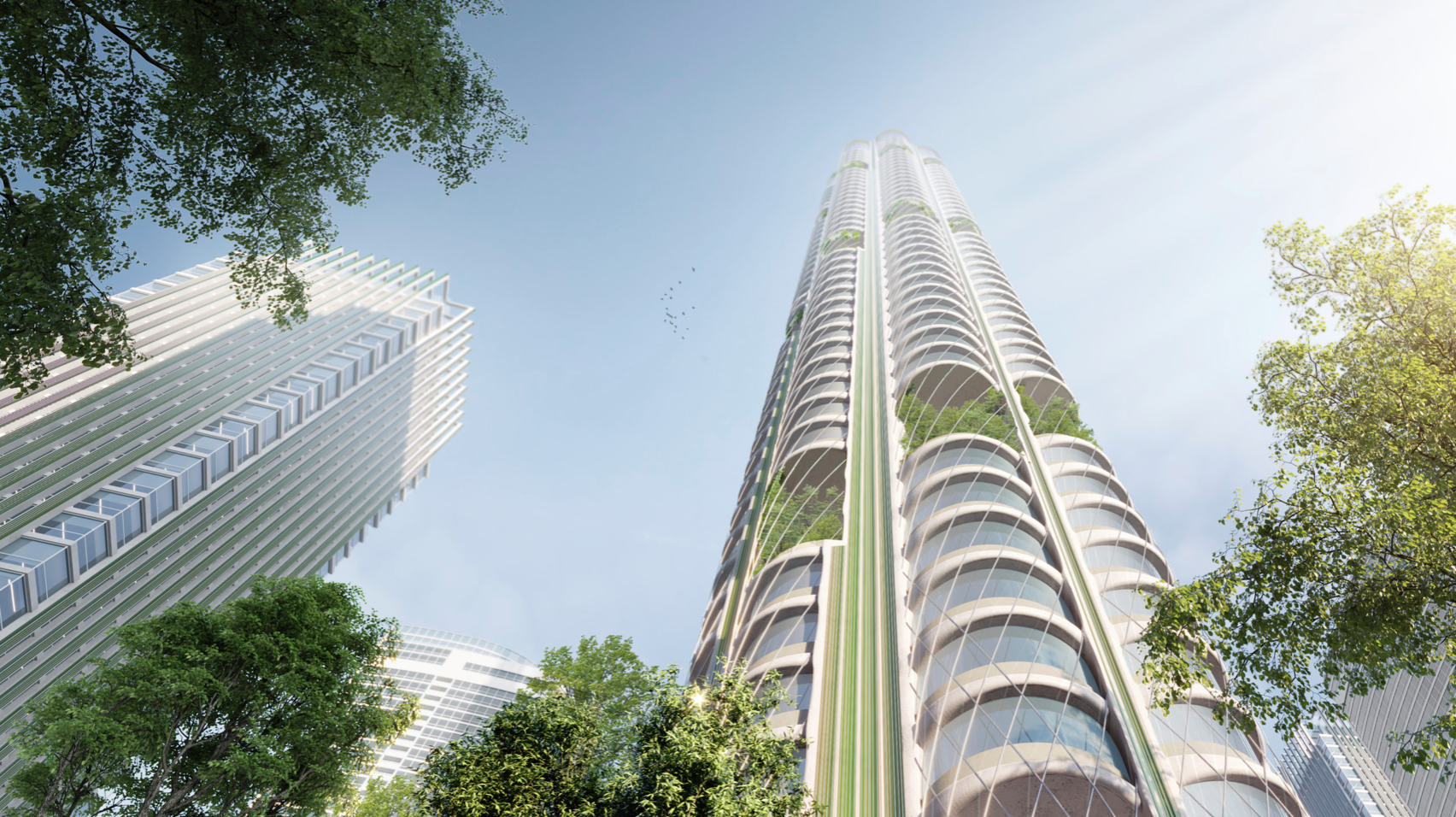Urban Sequoia: Proposed Hemp High-Rise is Carbon Negative
The proposed “Urban Sequoia” high rise is built with materials, including hempcrete, that absorb more carbon than it generates. Photo courtesy of SOM.
By Jean Lotus
One of the world’s most influential architecture firms is proposing using carbon-sequestering hemp as a vital part of the international built environment of the future.
Skidmore Owings and Merrill (SOM) announced the design of a hempcrete high-rise, the Urban Sequoia, a sleek, modern building that captures and sequesters as much carbon as it generates.
The firm rolled out the design for Urban Sequoia at the COP26 Climate Summit in Glasgow last month. The prototype design was generated by the international firm’s London studio, with partnerships worldwide.
The proposed high rise (not yet in production) can sequester as much as 1,000 tons of CO2 per year, equivalent to 48,500 trees. The company says they are seeking a locale and investors to build the first prototype.
Subscribe for HempBuild Magazine’s free newsletter
“The central proposition of Urban Sequoia is that the built environment can absorb carbon. SOM’s proposal transforms buildings into solutions—radically rethinking how buildings and cities are designed and constructed,” the company said in their press release.
“Our proposal for Urban Sequoia—and ultimately entire ‘forests’ of Sequoias—makes buildings, and therefore our cities, part of the solution by designing them to sequester carbon, effectively changing the course of climate change,” said Chris Cooper, design partner, in a statement.
Hempcrete, an insulation formed with hemp stalk and lime, is only one of the carbon-capturing features of the building. SOM also included bio-bricks, algae, timber and biocrete to replace concrete and steel—resulting in a construction impact of 50% less carbon, the company said.
The proposed high rise would also use air currents moving inside the building through its “stack effect” to capture CO2 with direct air capture devices, which turn CO2 into rock, similar to those rolled out in Iceland this year.
Architects worldwide are using hemp and hempcrete blocks in large, ambitious projects. For example, a 15-unit hempcrete apartment building was constructed in Paris this year, designed by Barrault Pressacco.
British hempcrete builder and designer Alex Sparrow of UK Hempcrete told HempBuild Magazine he finds the Urban Sequoia premise “really exciting.”
Click here to go to our FREE online community.
Scaling hemp building materials from a craftsman level to use on a broad scale will take a “modular prefabricated elements to be assembled quickly on site,” he said in an email.
Already, several European companies are pumping out hempcrete blocks such as Belgium’s IsoHemp, which expanded the company’s factory to generate 5 million blocks per year. French cement company Groupe Vicat also manufactures hempcrete blocks.
Moving forward, as international urban populations continue to grow in the coming decades, studies predict another 230 billion square meters of new building stock will be needed by 2060, SOM said.
The Urban Sequoia proposal would incorporate bio materials such as hempcrete in low-rise buildings too, to potentially remove up to 1.6 billion tons of carbon from the atmosphere every year.
“On the face of it, this looks like a solution which would allow us to continue with scale construction, whilst breaking the pattern of very high embodied carbon emissions associated with the construction industry,” Sparrow added. “This could be the future!”
Please Support Our Classified Advertisers
(To find out more about advertising CLICK HERE).
Help Wanted:
Training and Education
Publications
Hemp Building Directory 2022 - Guide to the International Hemp Building Industry
Available Now! “Hemp Buildings - 50 International Case Studies” by Steve Allin
Hemp Hurd (shivs)/Hemp Fiber/ Hemp Microfiber
Hempcrete installers/Insulation subcontractors
Lime Binder
Hemp Batt Insulation/Supplies
Green Builders
Hemp Building Engineers
Hemp Genetics
Professional Associations
Events



